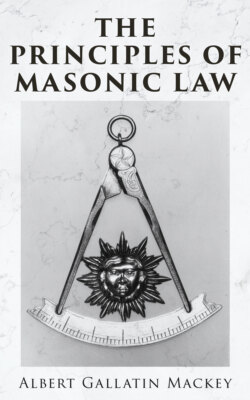Читать книгу The Principles of Masonic Law - Albert Gallatin Mackey - Страница 6
ОглавлениеThe Authorities for Masonic Law.
The laws which govern the institution of Freemasonry are of two kinds, unwritten and written, and may in a manner be compared with the "lex non scripta," or common law, and the "lex seripta," or statute law of English and American jurists.
The "lex non scripta," or unwritten law of Freemasonry is derived from the traditions, usages and customs of the fraternity as they have existed from the remotest antiquity, and as they are universally admitted by the general consent of the members of the Order. In fact, we may apply to these unwritten laws of Masonry the definition given by Blackstone of the "leges non scriptæ" of the English constitution—that "their original institution and authority are not set down in writing, as acts of parliament are, but they receive their binding power, and the force of laws, by long and immemorial usage and by their universal reception throughout the kingdom." When, in the course of this work, I refer to these unwritten laws as authority upon any point, I shall do so under the appropriate designation of "ancient usage."
The "lex scripta," or written law of Masonry, is derived from a variety of sources, and was framed at different periods. The following documents I deem of sufficient authority to substantiate any principle, or to determine any disputed question in masonic law.
1. The "Ancient Masonic charges, from a manuscript of the Lodge of Antiquity," and said to have been written in the reign of James II.1
2. The regulations adopted at the General Assembly held in 1663, of which the Earl of St. Albans was Grand Master.2
3. The interrogatories propounded to the Master of a lodge at the time of his installation, and which, from their universal adoption, without alteration, by the whole fraternity, are undoubtedly to be considered as a part of the fundamental law of Masonry.
4. "The Charges of a Freemason, extracted from the Ancient Records of Lodges beyond sea, and of those in England, Scotland, and Ireland, for the use of the Lodges in London," printed in the first edition of the Book of Constitutions, and to be found from p. 49 to p. 56 of that work.3
5. The thirty-nine "General Regulations," adopted "at the annual assembly and feast held at Stationers' hall on St. John the Baptist's day, 1721," and which were published in the first edition of the Book of Constitutions, p. 58 to p.
6. The subsequent regulations adopted at various annual communications by the Grand Lodge of England, up to the year 1769, and published in different editions of the Book of Constitutions. These, although not of such paramount importance and universal acceptation as the Old Charges and the Thirty-nine Regulations, are, nevertheless, of great value as the means of settling many disputed questions, by showing what was the law and usage of the fraternity at the times in which they were adopted.
Soon after the publication of the edition of 1769 of the Book of Constitutions, the Grand Lodges of America began to separate from their English parent and to organize independent jurisdictions. From that period, the regulations adopted by the Grand Lodge of England ceased to have any binding efficacy over the craft in this country, while the laws passed by the American Grand Lodges lost the character of general regulations, and were invested only with local authority in their several jurisdictions.
Before concluding this introductory section, it may be deemed necessary that something should be said of the "Ancient Landmarks of the Order," to which reference is so often made.
Various definitions have been given of the landmarks. Some suppose them to be constituted of all the rules and regulations which were in existence anterior to the revival of Masonry in 1717, and which were confirmed and adopted by the Grand Lodge of England at that time. Others, more stringent in their definition, restrict them to the modes of recognition in use among the fraternity. I am disposed to adopt a middle course, and to define the Landmarks of Masonry to be, all those usages and customs of the craft—whether ritual or legislative—whether they relate to forms and ceremonies, or to the organization of the society—which have existed from time immemorial, and the alteration or abolition of which would materially affect the distinctive character of the institution or destroy its identity. Thus, for example, among the legislative landmarks, I would enumerate the office of Grand Master as the presiding officer over the craft, and among the ritual landmarks, the legend of the third degree. But the laws, enacted from time to time by Grand Lodges for their local government, no matter how old they may be, do not constitute landmarks, and may, at any time, be altered or expunged, since the 39th regulation declares expressly that "every annual Grand Lodge has an inherent power and authority to make new regulations or to alter these (viz., the thirty-nine articles) for the real benefit of this ancient fraternity, provided always that the old landmarks be carefully preserved."
